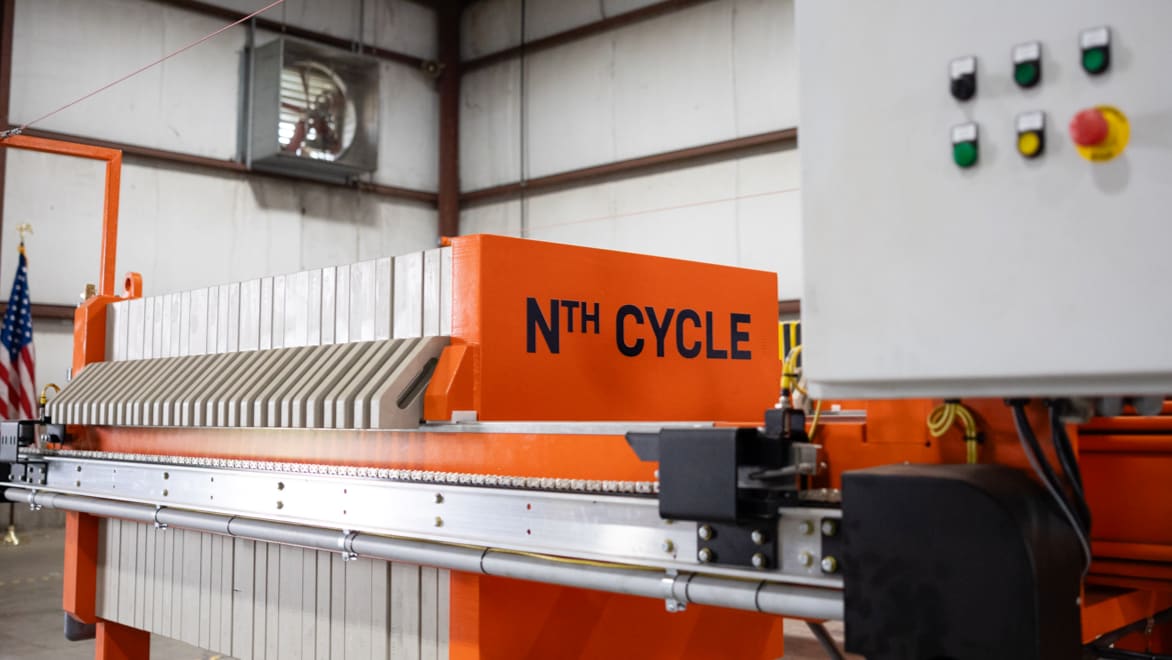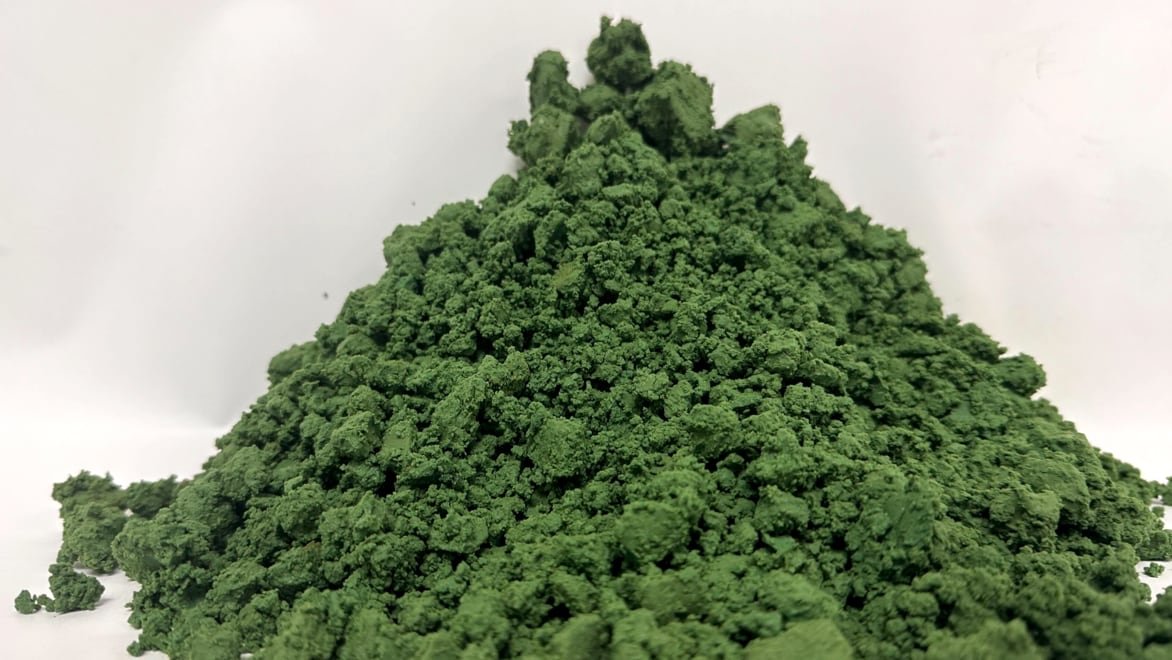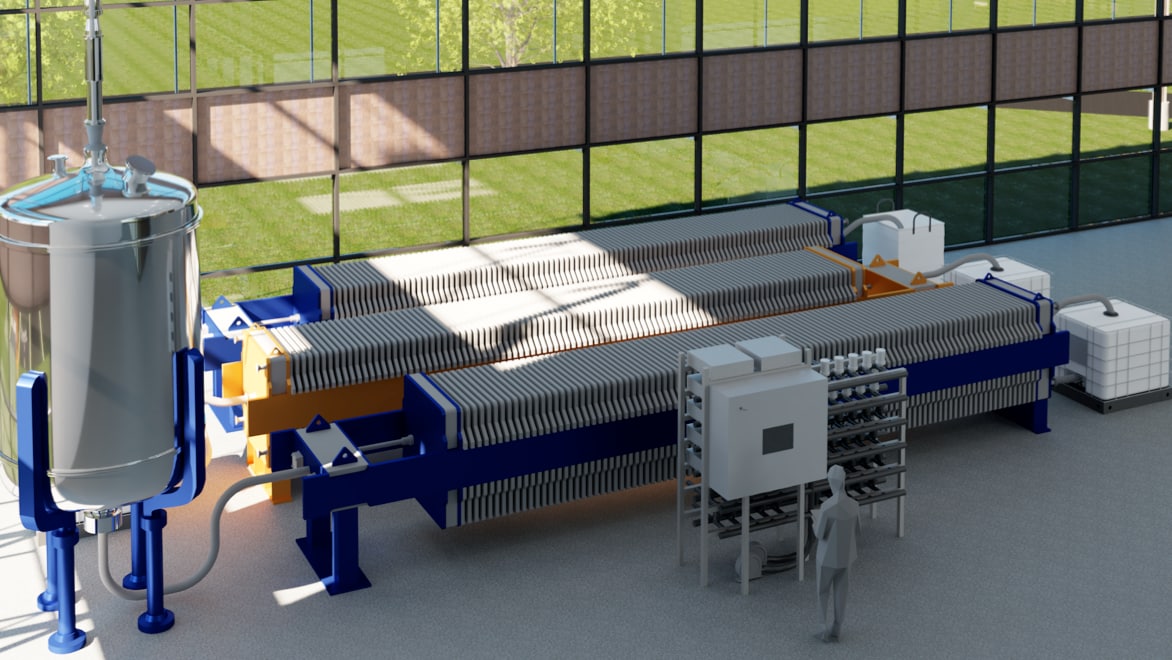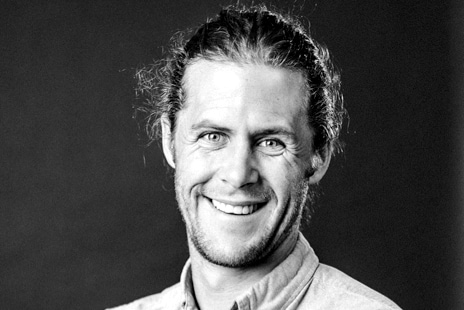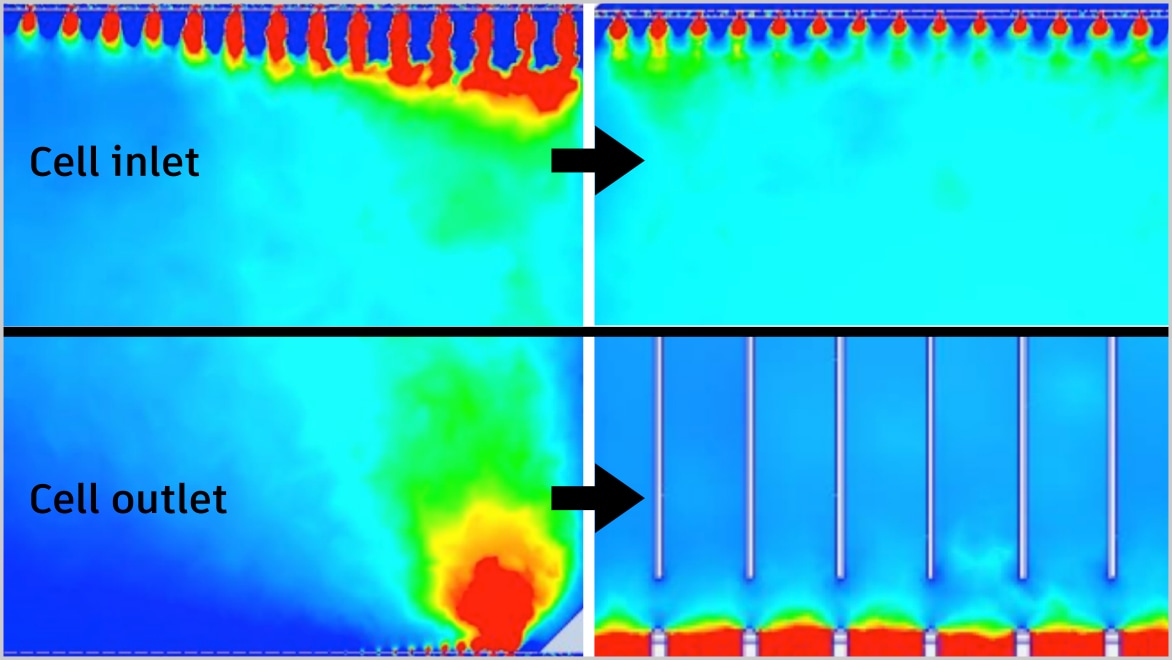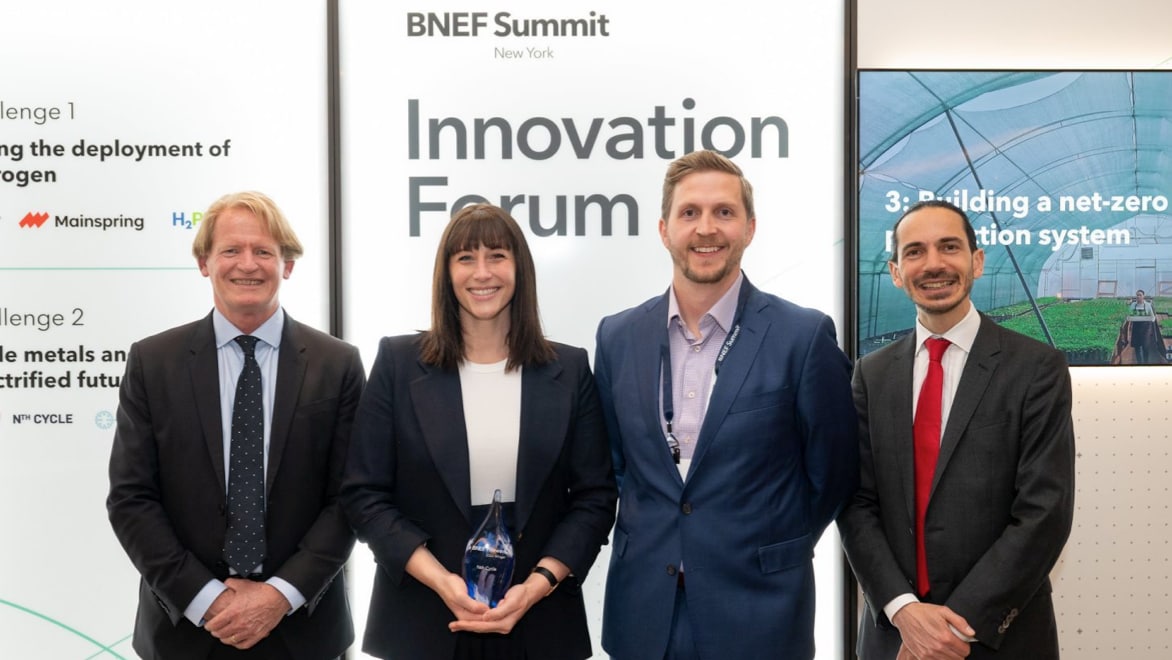Nth Cycle’s proprietary method for recovering and refining critical metals addresses a missing link in the electronics lifecycle: circularity. In collaboration with Symetri, an Autodesk training partner, Nth Cycle developed simulations using Autodesk Computational Fluid Dynamics (CFD) software to minimize the cost, time, and materials needed for design iterations.
Image courtesy of Nth Cycle
Although electric vehicles (EVs) produce fewer emissions than their fossil fuel-powered counterparts, current production methods come with their own environmental concerns. Critical metals are essential to the lithium-ion batteries powering most EVs, resulting in the depletion of finite resources such as cobalt—the demand for which nearly tripled due to EV production from 2018 to 2022.
“As the world becomes increasingly reliant on the critical metals that are the backbone of an electrified economy, it’s clear the sourcing of those materials must be as clean and efficient as the future we imagine,” says Megan O’Connor, co-founder and CEO of Nth Cycle and recipient of the Forbes 30 Under 30 award.
Nth Cycle’s solution is a patented electro-extraction processor, the OYSTER, which recovers metals through individual cells that isolate its Mixed Hydroxide Precipitate (MHP) product. Using only electricity and water, the OYSTER system has the potential to reduce emissions from current mining and recycling processes by 92% and 44%, respectively.
Nth Cycle’s Mixed Hydroxide Precipitate (MHP). Image courtesy of Nth Cycle
The complexity of the OYSTER cells makes it challenging to assess how design changes will affect their performance. Different substances mix in all three phases (solid, liquid, gas) and membranes must separate fluid flows while still allowing mixing to support the underlying electrochemistry.
Although Fusion 360 has reduced Nth Cycle’s prototyping lead times by up to 10 weeks, physical iterations and testing remain expensive, time-intensive, and material-consuming. A further complication is that some areas inside the cells aren’t visible, obstructing Nth Cycle’s assessment of internal fluid dynamics.
Physical prototyping indicated fluid mixing wasn’t uniform so Nth Cycle’s design and engineering team wanted to investigate whether design modifications could enhance its consistency. The team was also curious if the permeability of the cell membranes could be optimized further. Improving both properties would boost MHP production and increase cell longevity—important steps towards providing a solution at scale. Nth Cycle needed digital prototyping to address its burning questions, now and into the future.
Image courtesy of Nth Cycle
Through Autodesk’s Technology Impact Program, the Nth Cycle team received licenses of Autodesk CFD simulation software to start their digital prototyping journey. The Autodesk Foundation then sponsored four months of consulting services for Nth Cycle’s design and engineering team to set up and run CFD simulations with support from Autodesk training partner Symetri, effectively increasing the lean team’s bandwidth.
During the engagement with Symetri, a virtual model of the cell geometry was developed and simulated within CFD, unlocking a world of possibilities. One was confirming the relationship between non-uniform flow and the geometry of the cell inlets and outlets, opening the door to targeted design iterations. After validating the results of the CFD simulations against physical test results, further fluid flow, fluid mixing, and pressure studies were conducted to better understand the cells. Different membrane models were also tested to analyze the fluid behavior and pressure around each membrane.
— Wyatt Roscoe, Director of Operations, Nth Cycle
CFD enabled Nth Cycle to iterate on its original cell design (left) to achieve a more uniform flow velocity in the final design (right). Colors indicate varying flow velocities. Images courtesy of Nth Cycle
On average, a different design iteration was tested each month, informed by simulations and progress from the original design. The final design reduced velocity variation at the cell inlets from 31% to 2%, with the added benefit of decreased turbulence. After minor modifications, Nth Cycle is integrating this design into its new nickel and cobalt production facility in Fairfield, Ohio.
Even though simulating a complex, three-phase system challenges CFD’s current capabilities, the simulated outlet flow distribution remained within 5% of the expected results. CFD results for membrane permeability also matched the test data within an order of magnitude. Using these results as a foundation, Nth Cycle continues to challenge what is possible.
BloombergNEF CEO Jon Moore (left) and Global Head of Innovation, Client Relations and Partnerships Benjamin Kafri (right) presenting Nth Cycle CEO Megan O’Connor (middle-left) and CFO Coleman Adams (middle-right) with a 2023 Pioneers Award at the BNEF Summit, April 24, 2023. Image courtesy of BloombergNEF
The Nth Cycle team continues improving the virtual model as CFD’s capabilities expand, all while benefiting from the resulting decrease in prototyping costs, materials, and time. Once Nth Cycle is satisfied with the functionality and longevity of the cells, generative design will help the company optimize the cell geometry for new applications.
Nth Cycle’s forward momentum is building, especially after being awarded a $3 million grant from the US Department of Energy and winning a Bloomberg New Energy Finance (BloombergNEF) 2023 Pioneers award.
“We’re currently looking at different feedstocks in new industries with distinct flow patterns,” says Roscoe. “CFD allows us to quickly develop new prototypes for new methods of extracting metals, so we’ll be able to enter new markets faster.”
